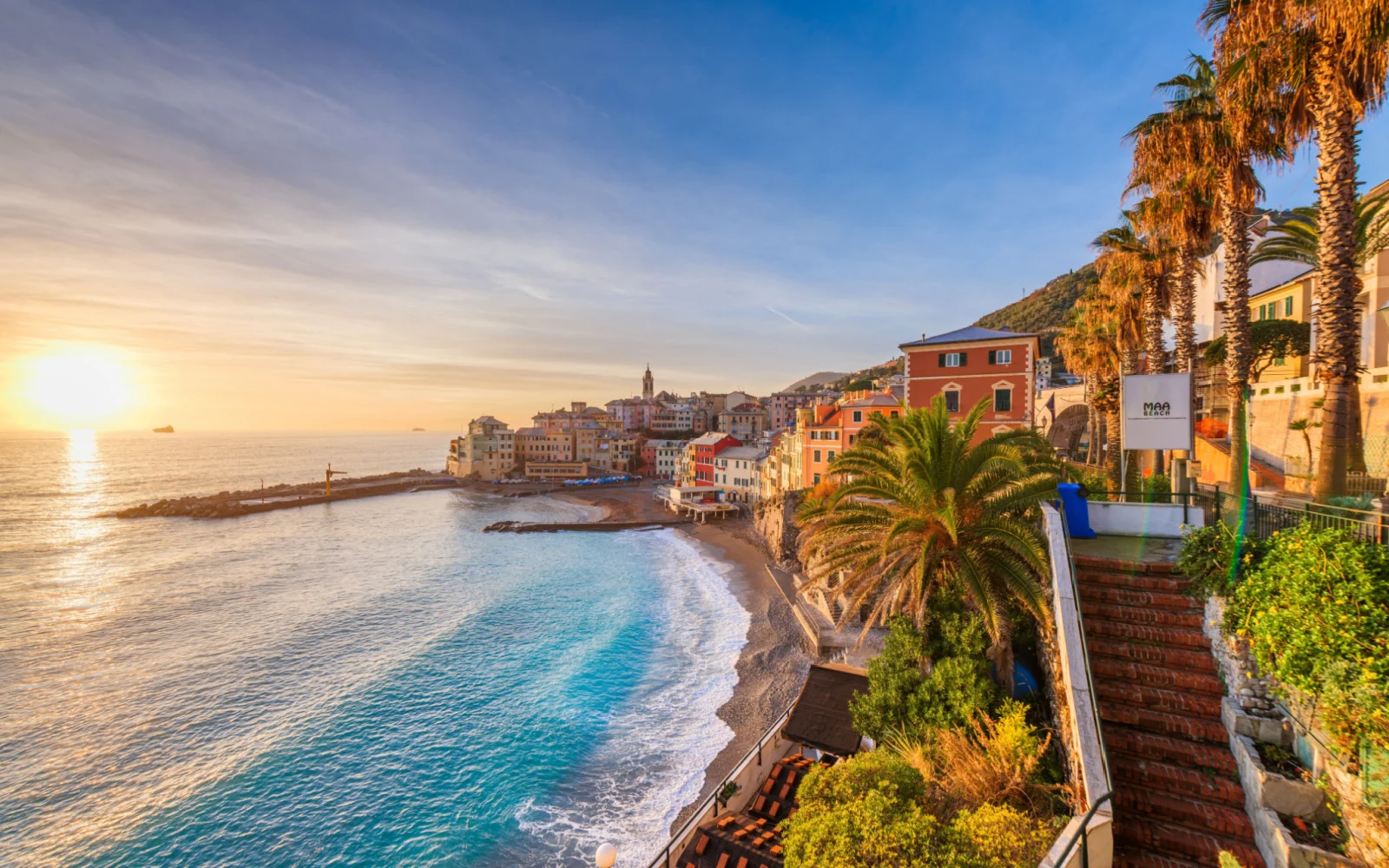What's the best time to visit the Mediterranean?
The best times to visit the Mediterranean are in the spring and fall, offering mild weather perfect for avoiding peak tourist crowds and enjoying outdoor activities. The region’s Mediterranean climate ensures pleasant temperatures, ideal for exploring historic sites and natural landscapes.
These seasons also align with vibrant local festivals and cultural events, from Easter processions in spring to harvest celebrations in fall, providing a rich cultural experience alongside scenic beauty.
The Mediterranean Sea is one of the most popular regions for tourism in the world, and almost all of the countries surrounding it receive millions of visitors annually. The main reason people visit the Mediterranean is to enjoy the mild climate and the beautiful beaches, which offer perfect swimming opportunities in the calm, warm sea.
The Mediterranean is also the cradle of civilization, and wherever you go you can see ancient ruins, from Roman amphitheaters in Tunisia to Ancient Egyptian pyramids in Egypt. The Mediterranean has over a dozen countries on three continents with many differences.
While there’s much to see and do in this area, knowing when to go is crucial to getting the most out of your trip. We’ll show you this and more below — let us be your guide!
The Overall Best Time to Visit the Mediterranean
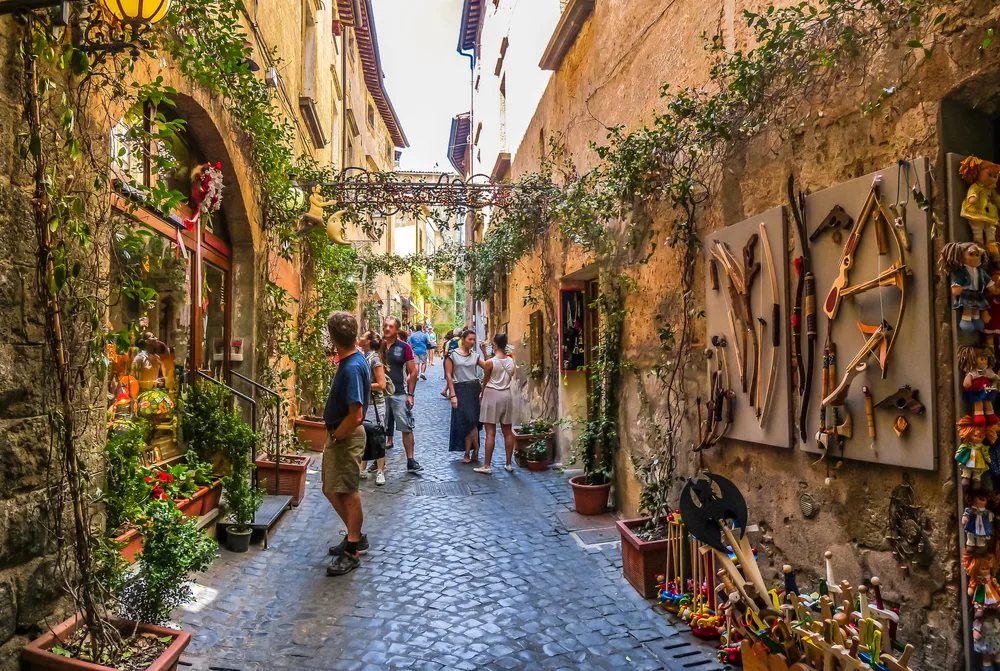
Canadastock/Shutterstock
The overall best times to visit the Mediterranean are in the spring or in the fall, when the weather is at its mildest and you can beat the worst of the crowds at popular tourist destinations.
The Mediterranean climate is unique, so much so that the sea gave its name to a specific climate type. The climate is characterized by dry, hot summers and cool, rainy winters that don’t get too cold. The temperatures are usually mild all year round, except for at very high elevations.
Exact temperatures vary depending on where you are in the Mediterranean, and in general the weather gets hotter the further south you go.
In most popular destinations such as Greece, Turkey, and Italy, you can expect temperatures in the high 60s to mid 70s in the spring, and high temperatures in the high 70s to low 80s in the fall.
Summer weather in most of the Mediterranean lasts longer than the actual summer. In many places, it is warm enough to go swimming by mid-April, and almost all of the Mediterranean is perfect for swimming by early May.
The warm weather lasts longer in the fall, and some people can go swimming well into October. The weather is warm but not too hot, meaning that you can do other activities besides swimming.
Walking around ancient ruins and timeless cities is a lot more pleasant when the sun isn’t beating down on your head. Plus, the shoulder seasons are ideal for other adventure activities such as rock climbing, mountain biking, or hiking.
Spring is slightly better for hiking because the landscapes are much lusher thanks to the winter and early spring rains, and you can even catch the wildflowers blooming. Temperatures in the autumn are good for hiking, but the landscape is arid and doesn’t look as good because summers dry them out.
Spring and fall also tend to bring religious holidays and local traditions to the forefront in Mediterranean countries. While the cultural calendar in these countries is full all year round, summer events tend to be more tourism-oriented.
During the shoulder seasons, you get to see events beloved by locals. In the Christian countries of the Mediterranean, spring is the best time to visit for Easter festivities.
This is the best time to visit Spain to catch the iconic Holy Week processions in southern Spanish cities such as Cordoba. During the fall, many festivals around the Mediterranean celebrate the bounty of the region.
This is a gourmand’s dream, with festivals celebrating everything from truffles to herbs (with plenty of tasting opportunities). Fall is the wine harvest season, and you can join in the festivities from Spain to Turkey and try some of the best vintages.
Cheapest Time to Visit the Mediterranean
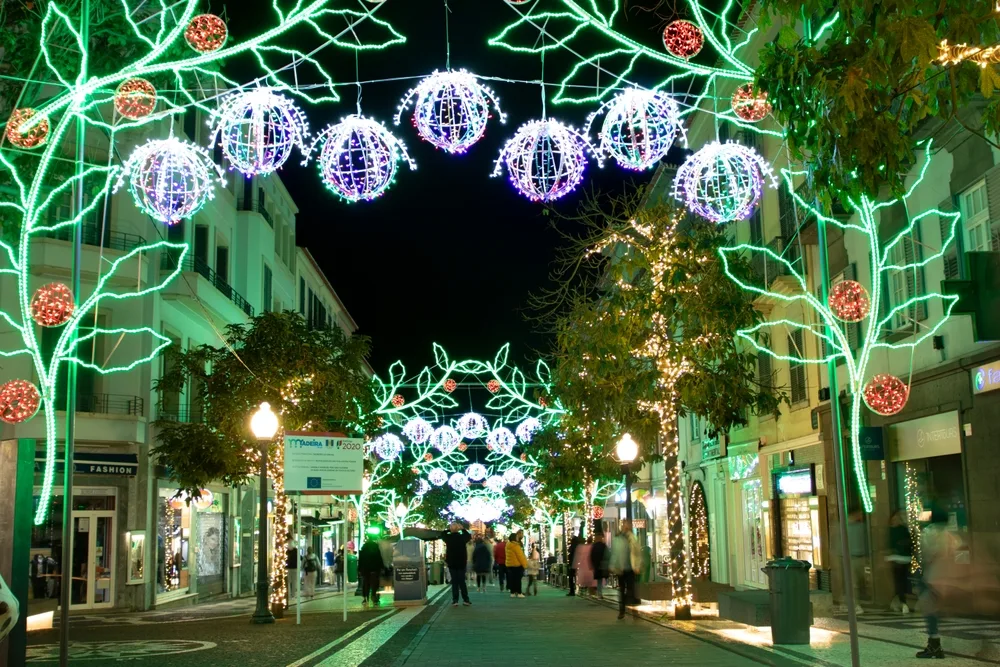
17.12.2023. Christmas lights decoration in Funchal, Madeira island. Portugal/Robertorosario8/Shutterstock
The cheapest time to visit most of the Mediterranean is during the winter, from November to March, when demand for travel is at its lowest.
Winter in the Mediterranean is the low season, which also means lower prices. The first budget item you can save on is your flights.
You want to avoid the Christmas period since that is when airfare goes up all over the world, but in November, January, February, and early March you can find discounted flights to most Mediterranean destinations.
Accommodation options also cost much less than during the high season. In some smaller places, hotels and inns close for the season. Those that remain open offer great discounts, sometimes up to 50%. Even some popular tourist attractions offer discounts for off-season visitors.
For example, the Acropolis reduces its ticket price by nearly 10 euros during the off-season. You can also get discounts on other popular activities, such as tours. However, winter is not the least expensive time to visit some parts of the Mediterranean.
The southern coast of the Mediterranean, Tunisia, Egypt, and Morocco, experiences its high season around this time because that is when most visitors from Northern Europe head to North Africa. There, you’ll get the least expensive prices in the summer.
Least Busy Time to Visit the Mediterranean
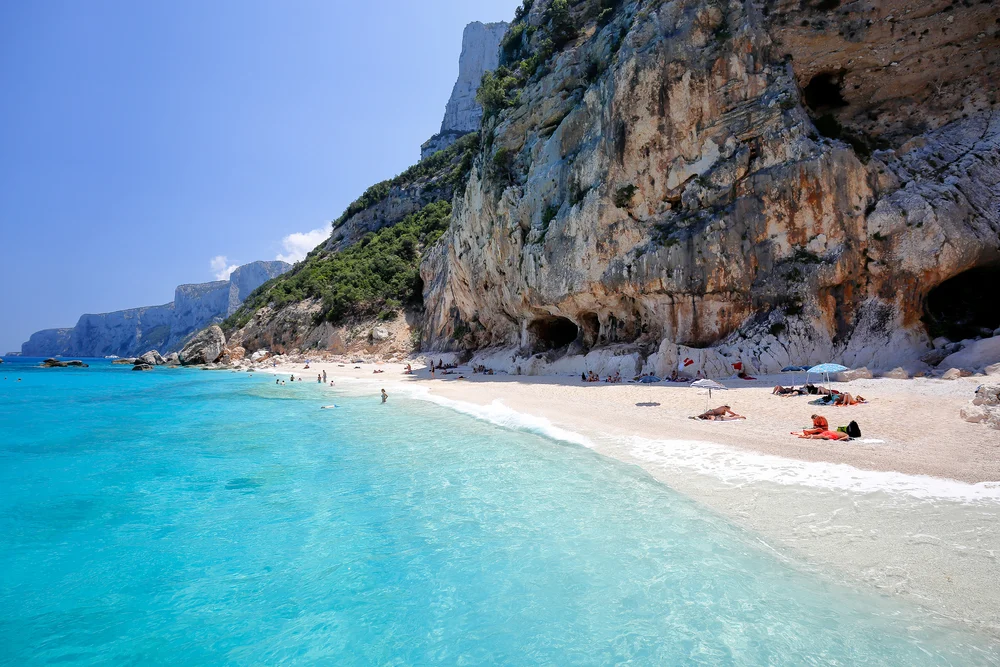
dpVUE.Images/Shutterstock
The least busy time to visit the Mediterranean is the winter, when most destinations are too cold for swimming and the cruise ship season is over.
Although winters in the Mediterranean are not too cold, they are generally too cold for swimming. Winters can get chilly and rainy, with strong winds and storms sometimes cutting off ferry traffic to the islands.
As long as you pack the right clothing, it is still warm enough to stroll around the cities and even have a coffee outdoors. Cruises are one of the biggest drivers of overcrowding across the Mediterranean.
Cruise season lasts from April to October and peaks in the summer months. By visiting in the months when there are the fewest cruise ships, you’ll have the smallest crowds in popular destinations.
Popular cruise ship ports such as Dubrovnik receive very few cruises in December and March, and sometimes have no scheduled arrivals in January and February.
Winter is the best time for a Mediterranean city break. You can walk around a destination such as Barcelona, Marseille, or Dubrovnik without waddling through the crowds, dine in any restaurant you wish without needing to reserve months in advance, and get beautiful photos.
Worst Time to Visit the Mediterranean
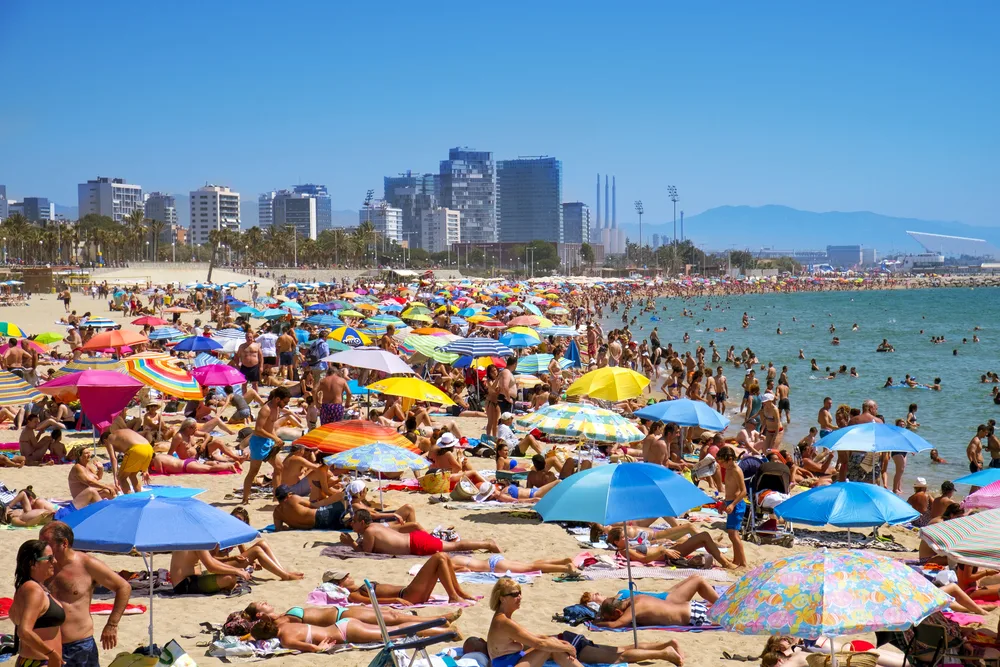
BARCELONA, SPAIN – JULY 10: Sunbathers at Platja del Bogatell beach on July 10, 2016 in Barcelona, Spain, with the Parc del Forum in the background. This busy beach is mainly frequented by the locals/Nito/Shutterstock
The worst time to visit the Mediterranean is in the summer, when the crowds are too thick to really enjoy the destinations and the weather is hot. Summer is the most popular time to visit the Mediterranean, which is the reason why you shouldn’t visit if you have any flexibility.
Expect to wait for hours to get into popular attractions, or even to have a meal at a popular restaurant or food stand.
Many of the Mediterranean’s most popular destinations are small islands such as Santorini that weren’t designed to receive thousands of visitors, so the tiny streets are so crowded you can barely move.
Even though many visitors flock to the Mediterranean during the summer for the beach, the season has some of the worst weather of the year.
Temperatures can get unbearably hot, often in the high 90s or even crossing 100 degrees. Summer is also the wildfire season, which is destructive across the region. Due to climate change, both problems are intensifying each year.
If you have to visit during the summer, for example because you are confined by school vacations, you can still have a good time. Do most of your exploring early in the morning or in the evening and take a midday nap to avoid sunburns and heatstroke—that’s what the locals do, after all.
Or try a less popular place in the Mediterranean that is still beautiful, but doesn’t receive as many visitors, such as the Albanian coast.
Frequently Asked Questions

Monte Carlo, Monaco – July 2018 – The Monte Carlo Casino, gambling and entertainment complex in Monte Carlo, Monaco, Cote de Azur, Europe/Ecstk22/Shutterstock
These top questions can help you with picking the best time to visit the Mediterranean:
What month has the best weather in the Mediterranean?
May has the best weather in the Mediterranean, with warm temperatures perfect for swimming that still aren’t too hot.
When is the rainy season in the Mediterranean?
The Mediterranean doesn’t have a dry or rainy season, but it gets the most rain in the winter, between November and March.
Where is the best weather in the Mediterranean?
In summer, the best weather is towards the north, while in the winter the weather improves the further south you go.
What month is the Mediterranean Sea the calmest?
The Mediterranean Sea is the calmest between June and August, making this the perfect time for nervous sailors to go on a boat tour.
When is the quiet season in the Mediterranean?
Winter is the quiet season for most of the Mediterranean, and you can expect few other visitors in November, January, and February.
So, What’s the Best Time to Visit the Mediterranean?
The best time to visit the Mediterranean is in the late spring or fall, when you can enjoy pleasant weather without the crowds of summer. For a city break, visit in the winter, when prices are discounted.



